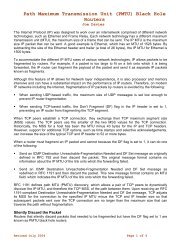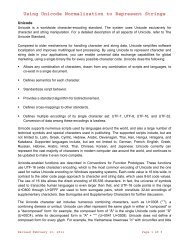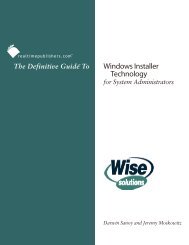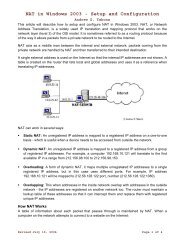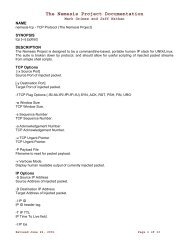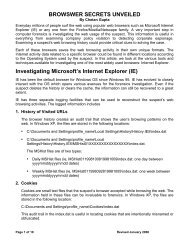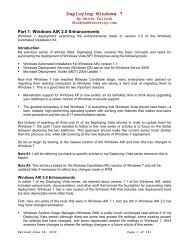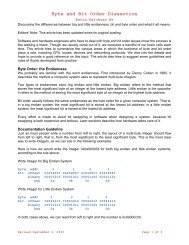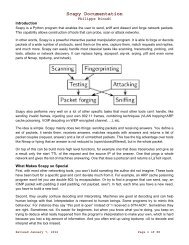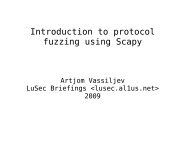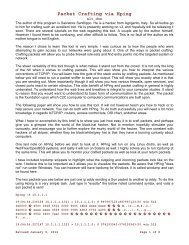Head Stack Replacement Questions and Answers
Head Stack Replacement Questions and Answers
Head Stack Replacement Questions and Answers
Create successful ePaper yourself
Turn your PDF publications into a flip-book with our unique Google optimized e-Paper software.
<strong>Head</strong> <strong>Stack</strong> <strong>Replacement</strong><br />
<strong>Questions</strong> <strong>and</strong> <strong>Answers</strong><br />
Stanislav Korb<br />
What is a Refurbished Drive? Can it be Used as a Donor?<br />
The purpose of refurbished drives is to utilize broken devices by using them for the second cycle while<br />
changing some parameters, disconnecting bad heads, changing firmware revision, etc. As examples<br />
of mass refurbishing we can mention drives Maxtor N40P series with a body taken from Maxtor Ares<br />
C64K, they have NAR61EA0 firmware revision; or Western Digital EB <strong>and</strong> BB series with the letter “R”<br />
in the serial number. Obviously, if a refurbished HDD is going to be built from the drive that has a bad<br />
system head (head number 0, the bottom one), this head will not be disconnected, but instead of it<br />
another one will become active <strong>and</strong>, accordingly, the firmware revision will be changed (e.g. for<br />
Seagate Barracuda 7200.7 there are several firmware revisions — 3.53, 3.75, 8.75 — where only a<br />
couple heads of the whole number are being used. Changing the head stack is never happens in<br />
factory repairs; instead, the manufacturer uses already available sources.<br />
One more factor is the adaptive parameters, which are calculated for particular head stack type, PCB<br />
<strong>and</strong> camera, <strong>and</strong> therefore are unique. Lack of coincidence between adaptive parameters in the<br />
system area of the recipient drive will not allow getting the quality data from it; moreover, this can<br />
cause clicking. Therefore, it can be said with confidence, that refurbished drives are of little use as<br />
head stack donors — there is quite high possibility that those heads will not accommodate well on a<br />
new place.<br />
<strong>Head</strong>s load/unload System<br />
Practically there aren’t that many types of heads load/unload systems. Roughly, they can be sorted<br />
into an “external” type systems (heads are parked outside the platters), <strong>and</strong> internal type (heads are<br />
parked directly on the platters in a special parking zone).<br />
The external load/unload system is being used in all modern 2.5-inch drives since it is much safer.<br />
Besides that, it is being used in IBM <strong>and</strong> Hitachi 3.5-inch drives (Figures 12—14). The external<br />
load/unload system can be also found in SCSI hard drives — with up to 12 heads being unloaded!<br />
Figure 12<br />
A load/unload zone with unloaded heads (IBM AVER series, 40 GB)<br />
Revised February 17, 2006 Page 10 of 18



